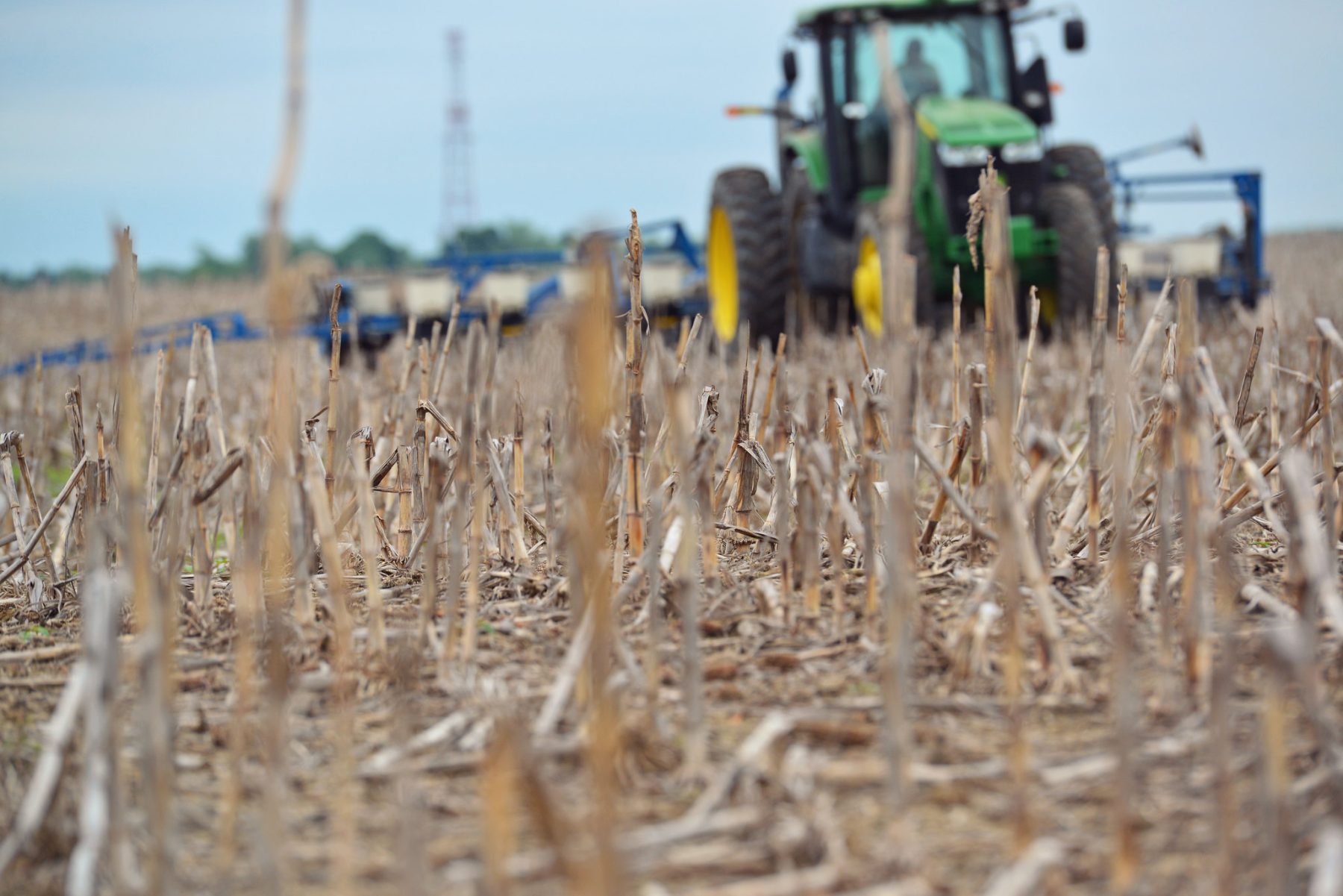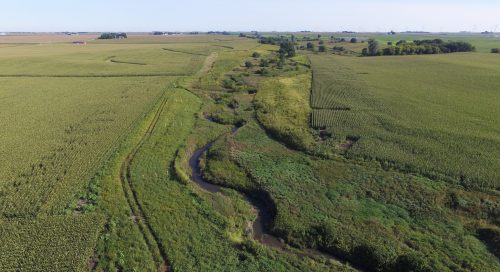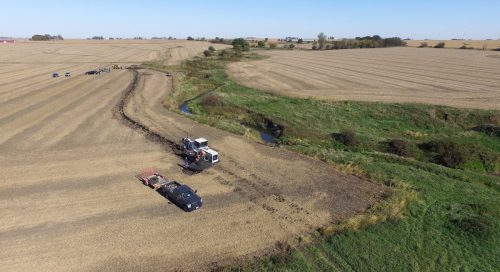An interview with Maggie Monast, Director of Working Lands at Environmental Defense Fund
For all farmers to fully embrace cover crops, no till, and other stewardship practices, adopting them simply must make financial sense. While that point might be obvious, the potential return on investment in conservation is not always easy for farmers to see, particularly given the short-term costs and risks associated with adopting these practices and, importantly, a financial system that is not currently set up to incentivize them.
What this predicament calls for is a transformation in the agricultural finance system, and a thought leader in that space is Maggie Monast, Director of Working Lands at Environmental Defense Fund.
One of the hurdles preventing farmers from taking advantage of the financial and production benefits of conservation practices is an omission of their value in agricultural lending and crop insurance, says Monast. This can make it harder for farmers to justify the short-term costs, even if the long-term gains in farm profitability and resilience – not to mention the benefits to financial institutions and society – would eventually outweigh them.
“If we demonstrate the financial value and risk reduction benefits of conservation to farm financial institutions – and engage them in incorporating that value into their decision-making and products – new incentives will be created for practices that improve the resilience of farms, reduce negative environmental impacts, and decrease risk across the U.S. farming and financial sectors,” said Monast.
For Monast, cultivating this innovation entails collaborating with economists and accountants to quantify the costs and benefits, advising finance providers such as agricultural lenders, and working to shift policy in a more favorable direction. She authored a recent report, Financing Resilient Agriculture, that provides a path forward to ag lenders to support a more resilient farming system. This past month she discussed those findings, along with those of another new report from a subcommittee of the Commodity Futures Trading Commission on managing climate-related risks to agriculture and its financial institutions to the House Select Committee on the Climate Crisis (check out her takeaways).
In this Q&A, Monast shares insights on solutions for transforming the agricultural finance system and how watershed leaders could help move the needle.
The conversation around financing agricultural conservation currently focuses a lot on carbon and climate-related benefits. How could we apply this thinking to watersheds and water-related benefits?
MM: There are two big reasons why many of the conversations around agricultural conservation are converging on climate. First, farmers are experiencing the impacts of a changing climate first-hand. Second, many major food companies have set greenhouse gas reduction targets, and they are examining their supply chains for opportunities to reduce emissions.
Fortunately, many of the same practices that can reduce greenhouse gas emissions, sequester carbon, and improve resilience to weather variability also have substantial water quality benefits. That isn’t true 100% of the time – in agriculture we always have to be attuned to the potential for unintended consequences – but there is a good deal of overlap in the benefits of extended crop rotations, cover crops, and more efficient nutrient management.
However, as we think about these practices in relation to their water quality benefits compared to climate benefits, there is a key difference: the importance of location. Greenhouse gases mix globally; it doesn’t matter where the reductions occur. But for water quality, the geographic location of the nutrient reduction or filtration is critical to the ultimate environmental outcome. This adds a layer of scientific complexity, but shouldn’t prevent us from identifying those win-win opportunities for clean water and the climate.
What roles do both private and public funding mechanisms play in financing conservation?
MM: A growing body of evidence, including EDF’s 2018 report Farm Finance and Conservation, shows that farmers who adopt resilient farming practices can reduce costs and financial risk and improve the profitability of their farming operations. These benefits are particularly evident when farm budgets are viewed over multiple years.
However, despite the long-term benefits, the transition period may deter many farmers from adopting these practices — especially in economically challenging times. There is a good case to be made that private capital, such as agricultural loans, should align to match those needs so farmers can navigate the transition toward increased resilience and profitability. There are several recent examples of organic transition loans; something similar could be developed for soil health practices.
Meanwhile, some agricultural conservation practices provide little or no direct benefit to the farmer, but generate important environmental or societal benefits. In that situation, there is a strong argument to be made for public funds to help fill the gap.
If private capital can be directed towards incentivizing farming practices that have financial value on the farm, and public funds can be directed towards practices that have broader environmental and social value, then there would be a much larger pool of total funds generating environmental benefits, and those funds would be targeted to have the greatest impacts.
What is one innovative state-level conservation finance program with watershed-related benefits that you think provides a good model for replication?
MM: Last year, we collaborated with the National Association of State Departments of Agriculture to look at innovative state-led approaches to finance agricultural conservation. We examined multiple state programs and found several great examples, including Iowa’s crop insurance program for cover crops, in which farmers who plant cover crops get a $5 per acre rebate on their crop insurance. This is exciting because it reaches farmers through their crop insurers, which creates a new avenue for conservation incentives. That program is already being replicated in Illinois and is definitely worth consideration by other states.
What are some of the needs to accelerate the innovations in conservation finance?
MM: While many studies analyze farmer budgets and other relevant data sources, there is a critical need to expand such analyses and connect them to the type of information required by agricultural lenders and crop insurers for decision-making and risk analysis – for example, between farm conservation adoption and crop yield resilience. The USDA has an important role to play here, as the existing data silos make it challenging to connect some of the dots.
An important caution is to avoid relying entirely on data sources that exclude small farmers or farmers of color. For example, farm management software is much more commonly available to and used by large-scale farmers. We need to understand and mitigate blind spots in the data as we design financial products and policy.
The path forward will require methods to assess the financial performance and resilience of farms of all types and sizes, and an openness to learn from a variety of different operations. This will also require clear protections for all farmers in terms of how their data will be used and secured. Opportunities to support and simplify farm recordkeeping for farms of all sizes would help.
How can we use transformations in agricultural finance to increase equity in agriculture?
MM: There is a critical intersection between considerations of equity and resilience in agriculture and agricultural credit. The USDA defines socially disadvantaged farmers and ranchers as members of certain racial and ethnic minority groups and women. A 2019 study of agricultural credit services provided to such individuals, conducted by the Government Accountability Office, found that they represent an average of 17% of primary producers, but they account for only 8% of total agricultural debt. This demonstrates the challenges that farmers of color and women farmers face that restrict their ability to obtain private agricultural credit.
According to the GAO report, socially disadvantaged farmers are more likely to operate smaller, lower-revenue farms; have weaker credit histories; or lack clear title to their agricultural land, which can make it difficult for them to qualify for loans. Farmers of color and advocacy groups also report unfair treatment and discrimination in lending.
There are many opportunities to improve both the resilience and equity of agriculture through inclusion of organizations led by farmers of color, women farmers and small farmers. Strengthening support for these farmers within the agriculture sector can establish paths toward long-term prosperity while helping to secure the future of resilient food systems.
The bottom line of your report Farm finance and conservation is that conservation pays off for farmers, and indeed that is a message I think many are trying to convey nowadays. What is some practical, evidence-based advice you think watershed leaders could give farmers about how to make conservation work financially?
MM: Our work with farmers and agricultural accountants revealed some key themes, including:
- Cost savings come from practice interactions. Conservation agriculture is a management system — the whole is greater than the sum of its parts, or practices. Significant cost savings can be achieved, but it requires a focus on the interaction between practices in order to achieve those savings. For example, no-till often requires a different regime of herbicide use, but cover crops can assist with weed suppression and provide nutrients, which may allow for decreased fertilizer and chemical application.
- Benefits can take several years to materialize. Practices that build soil health can take several years to generate a financial benefit due to the management transition and the time it takes for soils to improve. Recognizing and planning financially for this transition period and taking a multi-year view of the investment are both critical to success.
- Risk reduction is a key benefit. The relationship between healthy soils, water management, and crop yield resilience is important, as is the opportunity to reduce financial risk overall through crop diversification and minimizing costs. However, it can be challenging to measure financial benefits that only appear in certain years or under poor weather conditions.
- Strong farm management — including accurate recordkeeping — is essential. Farm recordkeeping allows farmers to track practice interactions and potential cost savings, and to effectively manage the many variables involved on each farm to achieve the best results.
Extension is in the business of building “human capital” for conservation, or the individual skills and knowledge necessary for success. What do you see as needs to grow sufficient human capital to adopt innovations in conservation financing?
MM: We see tremendous opportunity for growth in supporting farmers to understand the financial impacts of their conservation decisions, and yet it is somewhat outside of the traditional skill set of conservation technical assistance providers. We’re currently collaborating with several other organizations and universities that have published farm budget case studies of farms implementing conservation adoption. We are working with them to develop some guidance on how to conduct those analyses effectively, so they provide value to the farmer, are comparable with other analyses, and can inform agricultural lenders as well.

About Maggie Monast
Maggie Monast is a Director on Environmental Defense Fund’s Working Lands team. She works with farmers, financial institutions, agricultural organizations and others to create an agricultural system that drives climate stability, clean water, and food security. She works to quantify the farm financial impacts of conservation practice adoption, collaborates with major financial institutions and food companies to develop financial solutions that support farmer adoption of conservation, and identifies policy solutions to advance resilient agriculture. Read more here.
Monast began working with EDF in 2011. She holds a Master’s Degree in Environmental Management with a focus on economics from Duke University and a Bachelors in Economics and Political Science from Tufts University. She previously interned with the U.S. Senate Committee on Agriculture, Nutrition, and Forestry. She also currently serves on the North Carolina Environmental Management Commission.
Header image by United Soybean Board



